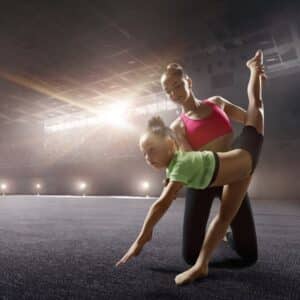
Flexibility, sometimes overshadowed by strength and power, is a vital element of gymnastics training. It’s the silent hero that allows gymnasts to glide through air with grace and land with precision. It’s also the attribute that takes the longest to develop and is the easiest to lose. But how do gymnasts get so flexible?
In this article, we’ll explore the various techniques and training methods used by gymnasts to achieve their impressive flexibility.
Disclaimer: This information does not replace the need for individual guidance from a professional. When performed incorrectly, flexibility exercises can cause injury.
The Science of Flexibility
Before we dive into the various stretching techniques used by gymnasts, let’s take a moment to understand the science behind flexibility. Flexibility is determined by a number of factors, including genetics, age, and gender. However, it’s important to note that these factors are not the end-all-be-all when it comes to flexibility. While you may not be able to change your genetics or age, you can still work on improving your flexibility through consistent training.
Key Takeaways
- Flexibility enhances performance, technique, and reduces injury risk.
- Understanding different types of stretches is crucial.
- Regular practice and correct techniques are key to improving flexibility.
Stretching Techniques Used by Gymnasts
There are several different types of stretching techniques used by gymnasts to improve their flexibility. These include dynamic stretching, static stretching, active stretching, and passive stretching. Each type of stretching has a different purpose and it’s important to understand each type and use it at the appropriate time.
Dynamic Stretching
Dynamic stretching involves actively moving the body through a range of motion. This type of stretching is typically done before a workout or competition to help prepare the body for the movements to come. Examples of dynamic stretching exercises include leg swings, arm circles, and walking lunges.
Static Stretching
Static stretching involves holding a stretch for a certain amount of time. This type of stretching is typically done at the end of a training session to help improve flexibility and prevent muscle soreness. Examples of static stretching exercises include the butterfly stretch, the split stretch, and the seated forward bend.
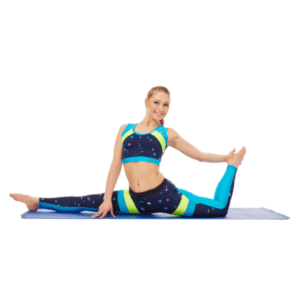
Active Stretching
Active stretching involves using the strength of your muscles to hold a stretch. This type of stretching is typically done to improve flexibility and prevent injury. Examples of active stretching exercises include the standing quad stretch and the standing hamstring stretch.
Passive Stretching
Passive stretching involves using an external force to hold a stretch. This type of stretching is typically done to improve flexibility and increase the range of motion. Examples of passive stretching exercises include partner stretching and using a stretching strap.
What is Range of Motion?
Range of motion (ROM) is a term used to describe the movement of a joint through its entire motion from full extension to full flexion, or from one extreme to another. It is the measurement of the degree of movement of a joint in different directions and the distance covered by the bones at the joint during movement.
In gymnastics, range of motion is critical for executing skills properly. Without a proper range of motion, you may not be able to achieve the correct body position for a particular skill, which can lead to improper technique, injuries, or lost points in a competition.
Range of motion is influenced by several factors, including the structure and shape of the bones, muscles, ligaments, tendons, and joint capsules. Joint mobility, muscle strength, and neuromuscular control are also important factors that can affect a range of motion.
The measurement of the range of motion is essential for assessing the function of joints and muscles, identifying limitations in movement, and monitoring progress in rehabilitation or physical therapy. It is typically measured using a goniometer, which is a device that measures joint angles.
There are different types of range of motion:
- AROM
- PROM
- AAROM
AROM refers to the movement that an individual is able to generate voluntarily, whereas PROM refers to the movement that is generated by an external force, such as a therapist. AAROM involves a combination of active and passive movements, with the individual performing the movement with the assistance of an external force.
Traditionally, many gymnastics coaches have followed older, established systems for improving flexibility and range of motion in their gymnasts. It is only in recent years that the science behind stretching techniques has been more widely understood.

Overcoming Plateaus in Flexibility Training
Before diving into strategies to overcome these plateaus, it’s vital to understand why they occur. The human body is an adaptive organism. When exposed to regular stretching exercises, muscles and connective tissues adjust to the new range of motion, leading to increased flexibility. However, as the body becomes familiar with the same set of stretches, the rate of improvement diminishes.
This is because the body aims to operate efficiently and will adapt to repeated stimuli up to a point, after which it requires new challenges to continue progressing.
- Vary Your Stretching Routine: If you’ve been doing the same set of stretches for months, it’s time to introduce new ones. Incorporating different types of stretching, such as dynamic stretching, PNF (Proprioceptive Neuromuscular Facilitation) stretching, or ballistic stretching, can target different muscle groups and provide varied stimuli to the muscles.
- Increase Stretching Frequency: While it’s important to allow muscles to recover, increasing the frequency of your stretching sessions can sometimes jolt the body out of a plateau. This doesn’t necessarily mean stretching harder but rather more often.
- Introduce Strength Training: Believe it or not, strength training can complement flexibility training. By strengthening the muscles surrounding a joint, you can potentially increase the joint’s range of motion. Exercises like squats or lunges can be particularly beneficial for enhancing leg flexibility.
- Mind-Muscle Connection: Paying close attention to how your muscles feel during a stretch and focusing on relaxing them can lead to a deeper and more effective stretch. This mindfulness approach can be especially useful in yoga, where the connection between mind and body is emphasized.
- Seek Expert Advice: Consulting with a physical therapist or flexibility expert can provide personalized advice tailored to your specific challenges. They might spot incorrect techniques or recommend stretches you haven’t tried.
- Stay Consistent: Even when it feels like you’re not making progress, consistency is key. Sometimes the body needs time to adjust, and small improvements might not be immediately noticeable.
Plateaus in flexibility training are a natural part of the journey. However, with the right strategies and a proactive approach, you can navigate these challenges effectively and continue on your path to improved flexibility.
Combining Stretching with Strength Training
While stretching is a key component of improving flexibility, it’s not the only one. Strength training exercises can also help improve flexibility by strengthening the muscles and increasing range of motion. Some examples of strength training exercises that can help improve flexibility include squats, lunges, and leg presses.
The Importance of Proper Nutrition and Hydration
Proper nutrition and hydration are also important factors when it comes to improving flexibility.
Staying hydrated can help improve the elasticity of your muscles, making it easier to stretch. Additionally, eating a well-balanced diet that includes plenty of fruits, vegetables, and lean protein can help provide your body with the nutrients it needs to stay healthy and flexible.
Preventing Injuries During Flexibility Training
It’s important to be mindful of the potential for injury when engaging in flexibility training. To prevent injuries, it’s important to start slowly and gradually increase the intensity of your stretches over time. Additionally, using proper form and technique during stretching exercises can also help reduce the risk of injury.
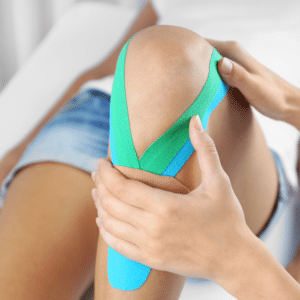
Which Gymnastics Apparatus Requires the Most Flexibility?
The beam and floor exercises in women’s artistic gymnastics require the most flexibility. These events involve a lot of split leaps, jumps, and turns, all of which require a great deal of flexibility. Rhythmic gymnastics also requires a lot of flexibility, particularly in the back, hips, and legs.
Which Gymnastics Moves Require the Most Flexibility?
The splits, split leaps, bridge, backward and forward walkovers are some of the gymnastics moves that require the most flexibility. The splits require a great deal of flexibility in the hips, hamstrings, and groin. The split leaps require flexibility in the hips and legs. The bridge requires flexibility in the back, shoulders, and arms, while the backward and forward walkover requires flexibility in the back, hips, and legs.
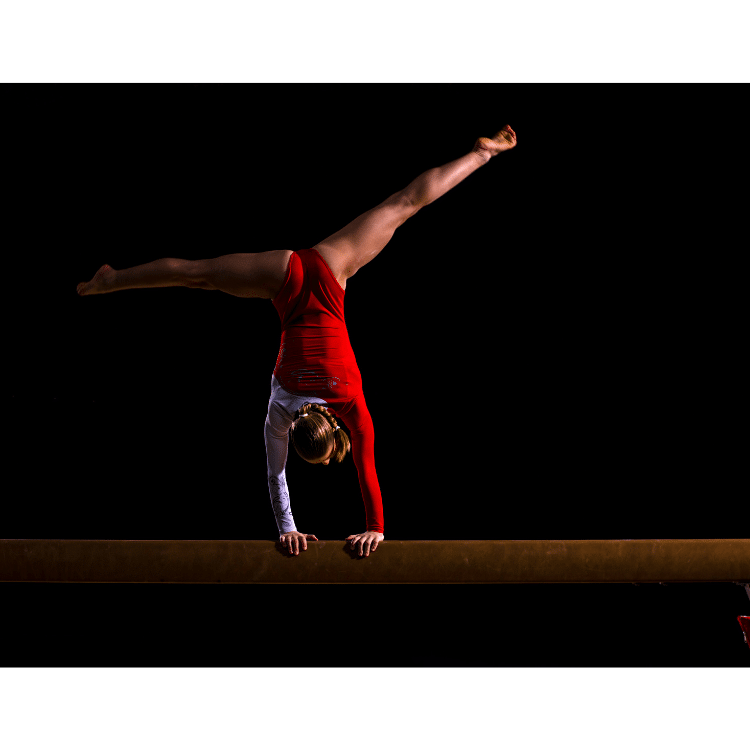
Benefits of Flexibility Training Beyond Gymnastics
While gymnastics is often associated with impressive feats of flexibility, there are many other benefits to improving your flexibility. Flexibility can help reduce the risk of injury during other physical activities, improve posture and balance, and even reduce stress levels.
Improved Posture: Regular flexibility exercises, especially those targeting the back and core muscles, can lead to better alignment of the spine. This improved posture can reduce the risk of back pain and other related issues.
Reduced Muscle Imbalances: Flexibility exercises can address muscle imbalances, which are often the root cause of various musculoskeletal issues. By ensuring that all muscles are equally flexible, the body can function more harmoniously.
Enhanced Blood Circulation: Stretching can increase blood flow to the muscles, providing them with more oxygen and nutrients and aiding in faster recovery after exercise.
Stress Reduction: Engaging in flexibility exercises, especially practices like yoga, can have a calming effect on the mind. Deep, focused breathing and gradual stretching can act as a form of meditation, reducing stress and promoting relaxation.
Tips for Beginners
If you’re new to flexibility training, it’s important to start slowly and gradually build up your flexibility over time. Additionally, be sure to warm up before stretching and stretch all major muscle groups to help prevent imbalances and reduce the risk of injury.
- Stay within your limits
- Build up your range of motion gradually
- Avoid overstretching
Synergy Gymnastics always recommends learning gymnastics in a recognized club with a professional coach above being self-taught. Use our Class Guide and find a session that’s right for you.
Common Myths About Flexibility Training
There are many myths and misconceptions surrounding flexibility training. One common myth is that stretching before exercise can actually decrease performance. However, research has shown that stretching before exercise can actually improve performance and reduce the risk of injury.
Conclusion
In conclusion, gymnasts achieve impressive levels of flexibility through consistent training and a variety of stretching techniques. By understanding and incorporating different types of regular stretching into their routines, gymnasts are able to improve their range of motion and prevent injuries. Additionally, proper nutrition and hydration, as well as strength training exercises, can also help improve flexibility.
Whether you’re a gymnast or simply looking to improve your flexibility, consistent training and proper technique are key.
FAQs
Is it possible for anyone to achieve gymnast-level flexibility?
While not everyone may be able to achieve the same level of flexibility as a gymnast, with consistent training and proper technique, most people can improve their flexibility significantly.
Can stretching actually improve athletic performance?
Yes, stretching before exercise can help improve athletic performance and reduce the risk of injury. However, it’s important to use proper stretching techniques and avoid overstretching, which can lead to injury.
How often should I stretch to see improvement in my flexibility?
To see improvement in your flexibility, it’s important to stretch regularly. Aim to stretch at least 3-4 times per week, and be sure to stretch all major muscle groups.
Can you overstretch and cause injury?
Yes, overstretching can cause injury, so it’s important to use proper technique and avoid pushing yourself too far beyond your current level of flexibility. Additionally, be sure to warm up before stretching and avoid bouncing or jerking movements during stretches.
Sources
The Health and Functional Benefits of Eccentric versus Concentric Exercise Training: A Systematic Review and Meta-Analysis. M, Ansari et al (2023)
- A Complete Guide to Gymnastics Hand Rips
 Are you tired of dealing with painful gymnastics rips on your hands from training? Look no further – this article offers a comprehensive approach to… Read more: A Complete Guide to Gymnastics Hand Rips
Are you tired of dealing with painful gymnastics rips on your hands from training? Look no further – this article offers a comprehensive approach to… Read more: A Complete Guide to Gymnastics Hand Rips - Is Gymnastics Dangerous? (Facts and Comparisons)
 Gymnastics is acknowledged as a highly technical and physically demanding sport. It inherently carries a risk of injury, which is why most coaches and clubs… Read more: Is Gymnastics Dangerous? (Facts and Comparisons)
Gymnastics is acknowledged as a highly technical and physically demanding sport. It inherently carries a risk of injury, which is why most coaches and clubs… Read more: Is Gymnastics Dangerous? (Facts and Comparisons) - The Fascinating Evolution of Gymnastics (History and Facts)
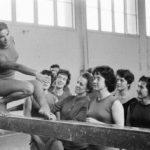 Gymnastics is a sport that has been around for centuries and has evolved significantly throughout history. From its origins in ancient Greece to the modern-day… Read more: The Fascinating Evolution of Gymnastics (History and Facts)
Gymnastics is a sport that has been around for centuries and has evolved significantly throughout history. From its origins in ancient Greece to the modern-day… Read more: The Fascinating Evolution of Gymnastics (History and Facts) - The Ultimate Parallel Bars Skills List
 Parallel bars are one of the most challenging events in men’s gymnastics. Mastering the right moves first on parallel bars is essential to improving your… Read more: The Ultimate Parallel Bars Skills List
Parallel bars are one of the most challenging events in men’s gymnastics. Mastering the right moves first on parallel bars is essential to improving your… Read more: The Ultimate Parallel Bars Skills List - The Long-Term Effects of Gymnastics on the Body (A Complete Guide)
 While gymnastics can offer many benefits, such as improved fitness and self-confidence, many people also ask what are the Long-Term Effects of Gymnastics on the… Read more: The Long-Term Effects of Gymnastics on the Body (A Complete Guide)
While gymnastics can offer many benefits, such as improved fitness and self-confidence, many people also ask what are the Long-Term Effects of Gymnastics on the… Read more: The Long-Term Effects of Gymnastics on the Body (A Complete Guide) - What Age Does Competitive Gymnastics Start?
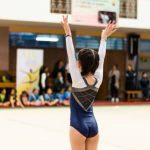 Ever wondered what age does competitive gymnastics start? It’s well known that gymnasts start training at a young age to develop the skills and strength… Read more: What Age Does Competitive Gymnastics Start?
Ever wondered what age does competitive gymnastics start? It’s well known that gymnasts start training at a young age to develop the skills and strength… Read more: What Age Does Competitive Gymnastics Start?
